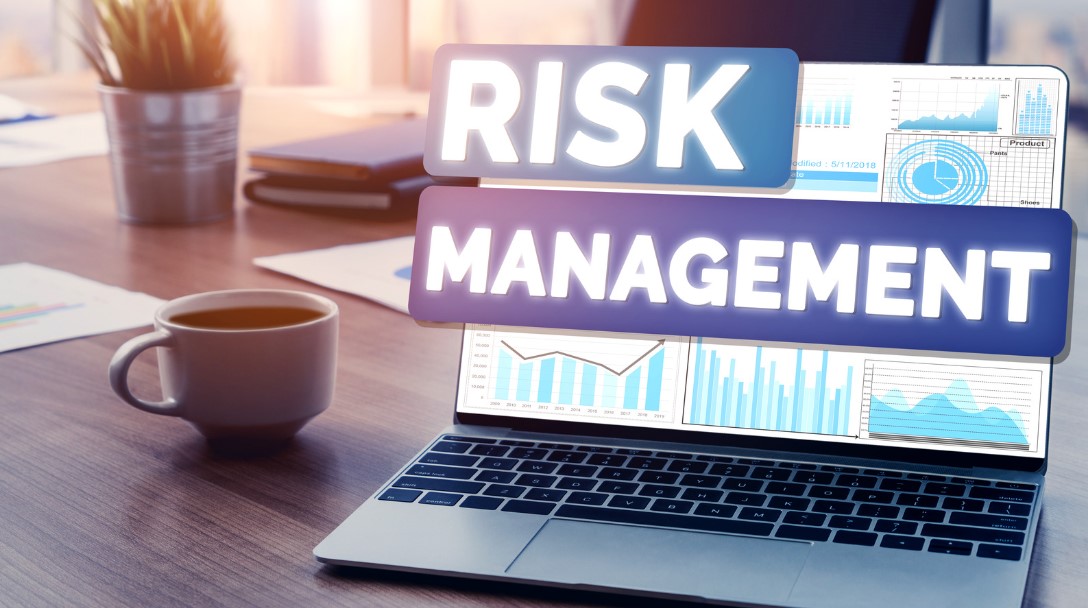Business risk refers to the exposure that a company or organization has to factors that may lower its profits or lead to its failure. It can arise from internal decisions made by the company’s management or external factors such as changes in consumer preferences, economic conditions, or government regulations. While businesses cannot completely avoid risk, they can adopt risk management strategies to mitigate its impact. This includes identifying and assessing different types of business risk, implementing measures to reduce and manage risk, and regularly evaluating and updating risk management plans.
In this article, we will delve into the concept of business risk and its importance to organizations. We will discuss various types of business risk, such as strategic risk, compliance risk, operational risk, and reputational risk. You will also learn about the strategies businesses can employ to reduce risk, including the identification of risks, risk mitigation measures, and the development of comprehensive risk management plans.
What Is Business Risk?
Business risk is impacted by various factors, including consumer preferences, demand and sales volumes, per-unit price and input costs, competition, the overall economic climate, and government regulations. These factors play a crucial role in determining the potential risks faced by a business and the measures required to manage and mitigate them effectively.
Consumer preferences and changing market trends can significantly impact a company’s success or failure. Understanding and anticipating consumer preferences allow businesses to align their strategies and offerings accordingly. By staying abreast of market demand and sales volumes, businesses can adjust their production levels and inventory management, mitigating the risks associated with under or overproduction.
Per-unit price and input costs are also critical factors. Fluctuations in the cost of raw materials or energy can impact a company’s profitability. By closely monitoring these costs and exploring alternative sourcing options or negotiating favorable pricing agreements, businesses can reduce their exposure to these risks.
Competition in the market is another crucial factor influencing business risk. The intensity of competition and the market share held by key players can impact a company’s profitability and market position. By conducting regular competitor analysis and identifying strategies to differentiate their products or services, businesses can strive to maintain a competitive edge and minimize the impact of competitive pressures.
The overall economic climate plays a significant role in business risk. Economic recessions, inflation, interest rate fluctuations, and currency exchange rate volatility can all impact a company’s profitability and growth potential. By staying informed about macroeconomic indicators, businesses can develop contingency plans to mitigate the risks associated with economic uncertainties.
Government regulations and changes in the legal environment can pose risks to businesses. Compliance with relevant laws, regulations, and industry standards is essential to avoid legal consequences, reputational damage, and financial penalties. By establishing robust compliance frameworks and staying informed about regulatory changes, businesses can ensure they operate within the bounds of the law and minimize potential compliance risks.
The Impact of Understanding Business Risk
By comprehensively understanding these various factors that contribute to business risk, companies can make informed decisions and develop effective risk management strategies. This understanding enables businesses to identify potential risks, devise appropriate risk mitigation measures, and proactively adapt to changes in the business environment.
Implementing risk management practices helps businesses maintain stability, protect their profitability, and navigate uncertainty. By managing business risk effectively, organizations can enhance their resilience, seize opportunities, and position themselves for long-term success in a rapidly evolving marketplace.

Types of Business Risk
When it comes to running a business, understanding the different types of business risk is crucial for effective risk management. By identifying and mitigating these risks, organizations can safeguard their operations, reputation, and long-term success.
Strategic Risk
Strategic risk occurs when a company’s operations deviate from its defined business model or business plan. This can include making decisions that lead to a loss of competitive advantage, entering unfamiliar markets without proper research, or failing to adapt to changing consumer preferences. An organization that fails to proactively manage strategic risk may find itself out of touch with market demands and unable to sustain growth.
Compliance Risk
Also known as regulatory risk, compliance risk refers to the potential penalties and legal consequences a business may face if it fails to adhere to relevant laws, regulations, and industry standards. Non-compliance can result in fines, reputational damage, and even legal action. It is essential for organizations to stay updated on relevant regulations and establish robust compliance procedures to mitigate this risk.
Operational Risk
Operational risk arises from internal processes, systems, and procedures within a business. It includes risks such as technological failures, supply chain disruptions, employee errors, or inadequate risk controls. These risks can impact the efficiency and effectiveness of a company’s operations, leading to financial losses, damaged reputation, and customer dissatisfaction. Effective risk management practices, including thorough operational processes and employee training, can help mitigate operational risks.
Reputational Risk
Reputational risk refers to the potential harm that can result from a negative perception of a company or brand. This risk is often associated with adverse publicity, customer dissatisfaction, or unethical behavior by the organization or its employees. A damaged reputation can lead to a loss of customer trust, decreased sales, and difficulties attracting top talent. Building a strong brand, establishing ethical business practices, and promptly addressing any issues that may damage reputation are critical in managing reputational risk.
To effectively manage business risks, organizations need to implement risk management strategies tailored to their specific needs and industry. By identifying, assessing, and mitigating these risks, businesses can protect their interests and ensure long-term success.

Reducing Business Risk
While it is impossible to completely avoid business risk, there are strategies that businesses can employ to reduce its impact. By implementing effective risk management strategies, organizations can identify and assess potential risks, develop risk mitigation measures, and create a comprehensive risk management plan. Taking proactive steps to address risks as they arise, monitoring the effectiveness of risk controls, and documenting risk management processes are key to minimizing the impact of potential risks and improving business resilience.
One of the first steps in reducing business risk is identifying and assessing risks specific to the organization. This involves conducting a thorough analysis of the internal and external factors that may affect the business’s operations, finances, and reputation. By understanding the potential risks, businesses can develop targeted risk management strategies to mitigate their impact.
Implementing risk mitigation measures is another crucial aspect of reducing business risk. This can include implementing robust internal controls, enhancing security measures, diversifying suppliers, and implementing business continuity plans. The goal is to minimize the likelihood and severity of potential risks and to have processes in place to effectively respond to and recover from any disruptions.
Developing a comprehensive risk management plan is essential for effective risk reduction. The plan should outline the organization’s risk management objectives, strategies, and procedures. It should also include clear roles and responsibilities for risk management within the company and outline the process for regularly reviewing and updating the plan to stay aligned with the evolving business environment.
In addition to implementing risk mitigation measures and developing a risk management plan, businesses should also focus on proactive risk monitoring and evaluation. This involves regularly assessing the effectiveness of risk controls, monitoring relevant key performance indicators, and conducting periodic risk assessments to identify any emerging risks that may require additional attention.
Benefits of Reducing Business Risk
Reducing business risk through effective risk management strategies has several benefits for organizations:
- Enhanced financial stability and profitability
- Improved decision-making based on accurate risk assessments
- Greater agility and ability to respond to market changes
- Enhanced organizational resilience and adaptability
- Increased stakeholder confidence and trust
By prioritizing risk management and actively working towards reducing business risk, organizations can safeguard their long-term success and achieve sustainable growth in a highly competitive and uncertain business environment.

| Risk management strategies | Benefits |
|---|---|
| Identifying and assessing risks | Enables targeted risk mitigation measures |
| Implementing risk mitigation measures | Reduces the likelihood and severity of risks |
| Developing a risk management plan | Provides a framework for effective risk management |
| Proactive risk monitoring and evaluation | Allows for timely identification and response to emerging risks |
Business Risk Management Importance
Effective business risk management is crucial for the success and sustainability of a company. By implementing a risk management plan, businesses can identify potential risks, establish risk control measures, and determine their risk appetite. Understanding the level of risk a business is willing to take and deciding on an appropriate risk management approach can help organizations make informed decisions and navigate uncertainties. Building a strong risk culture and regularly evaluating and adapting risk management strategies are key to managing and mitigating business risks.

Conclusion
Effective risk management strategies are crucial for the long-term success and resilience of businesses. By understanding different types of business risk and implementing proactive risk mitigation measures, organizations can minimize potential financial losses and maintain their competitiveness in an ever-changing business landscape.
Regular evaluation and updating of risk management plans enable businesses to adapt to new challenges and opportunities. It is vital to recognize the importance of risk management and make it an integral part of the decision-making process.
By prioritizing risk management and implementing robust strategies, businesses can navigate uncertainties, mitigate potential risks, and ensure their continued growth and success. Investing in risk management today can safeguard the future of a business, providing a solid foundation for sustainable and successful operations.





